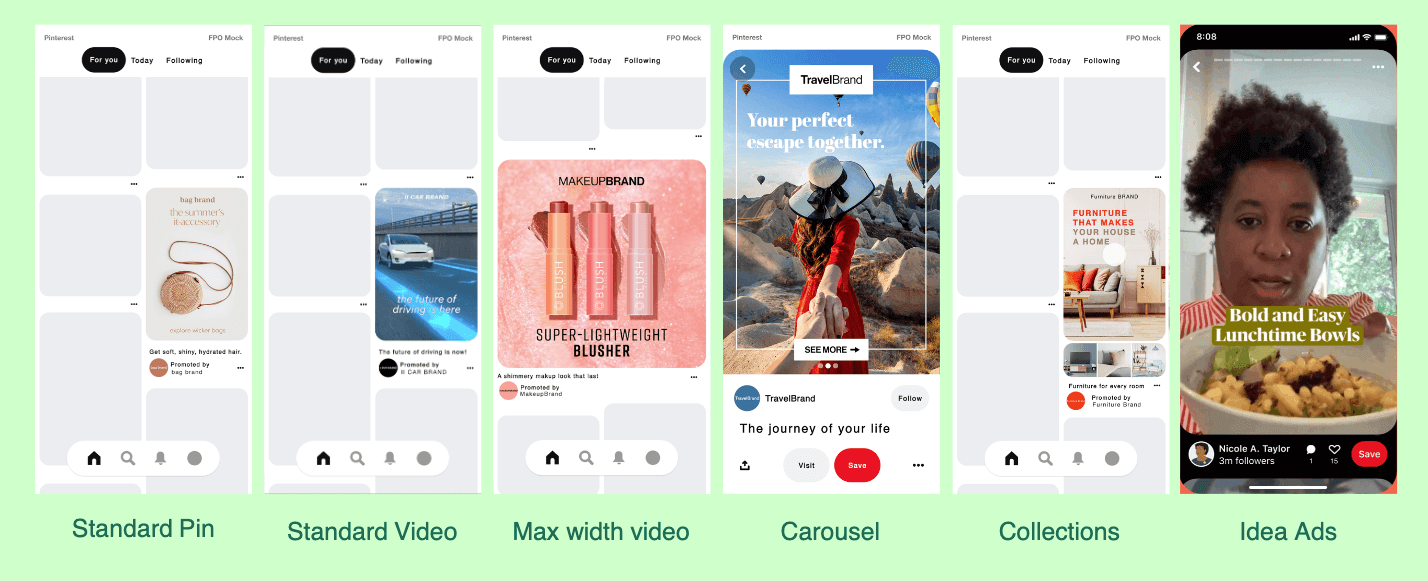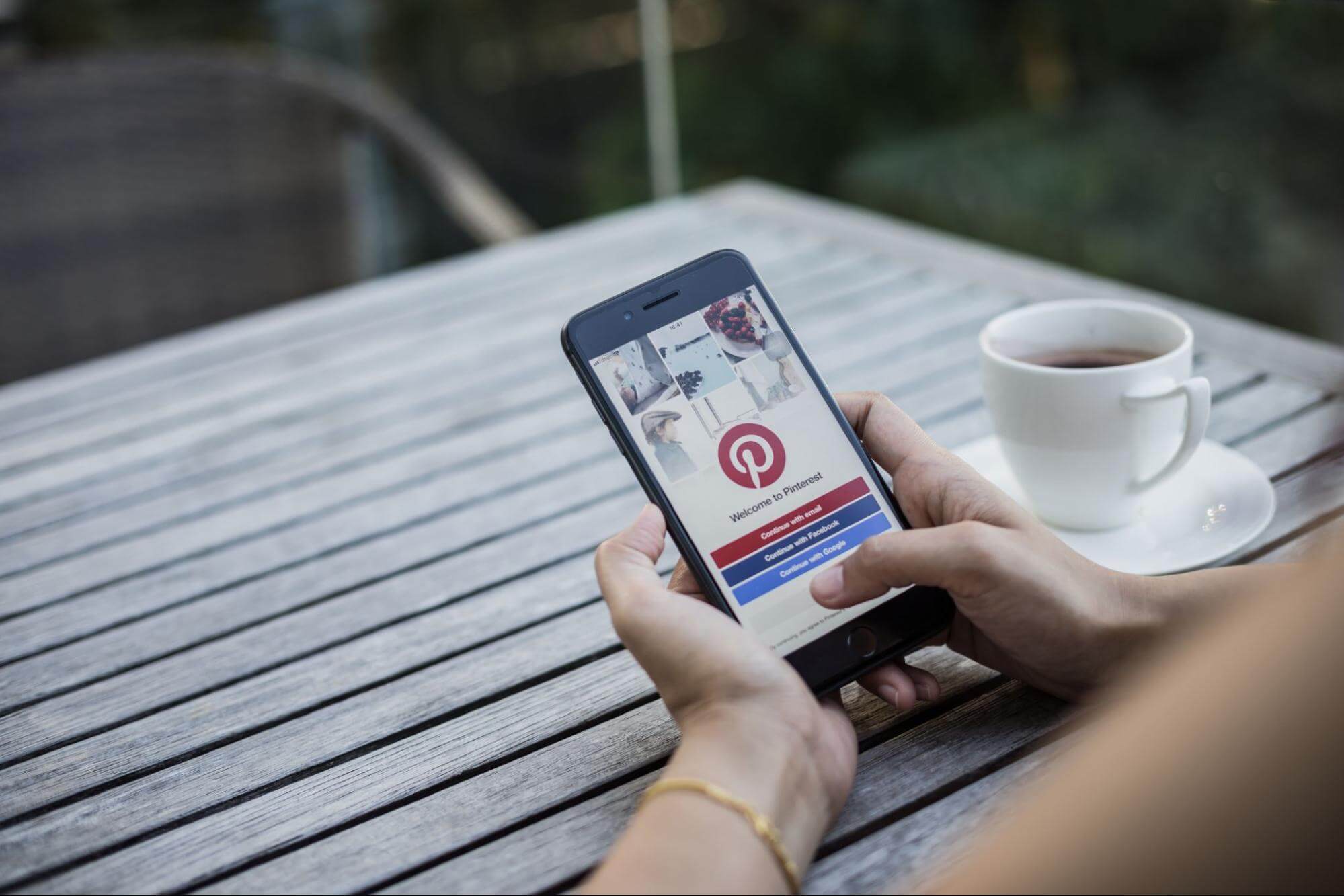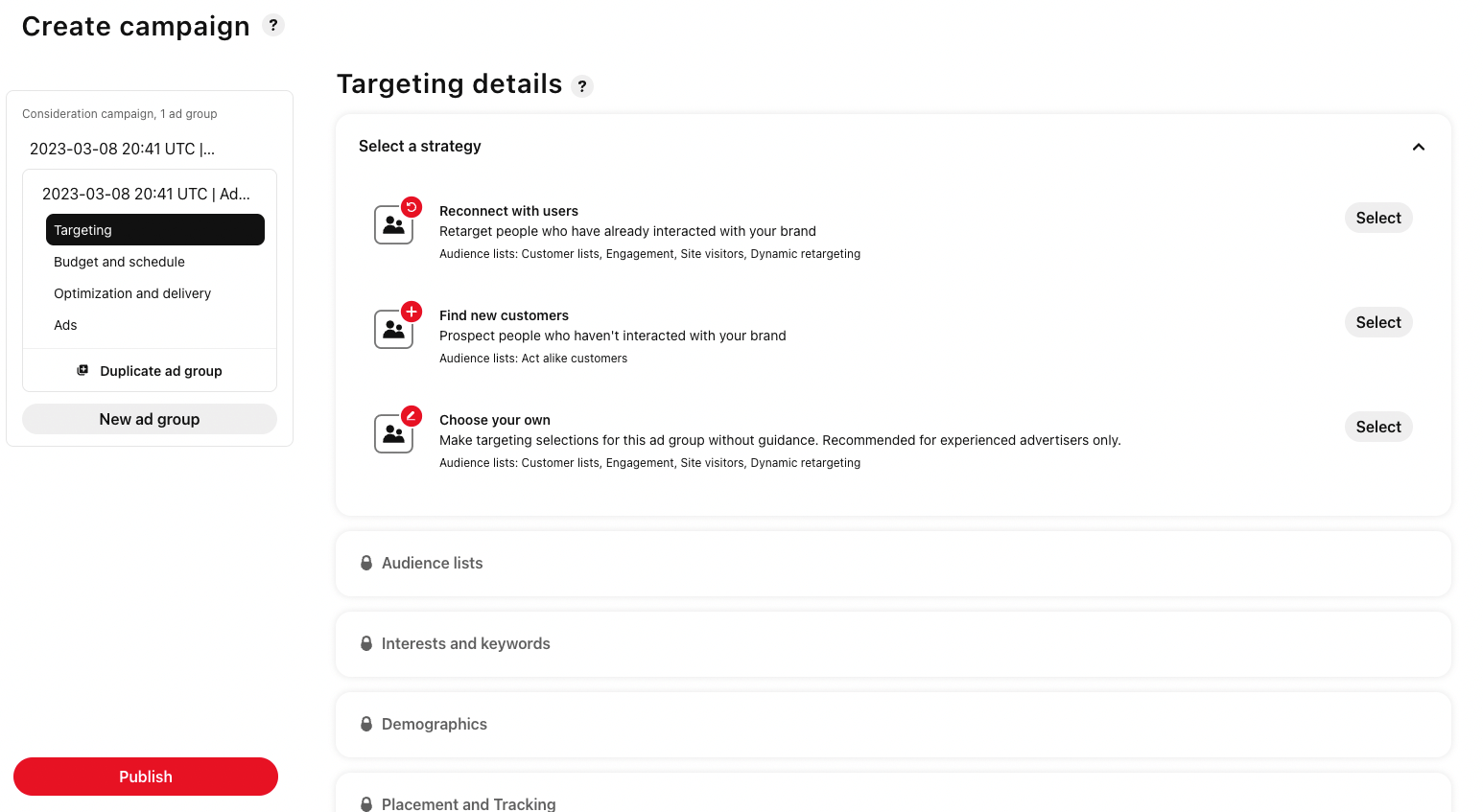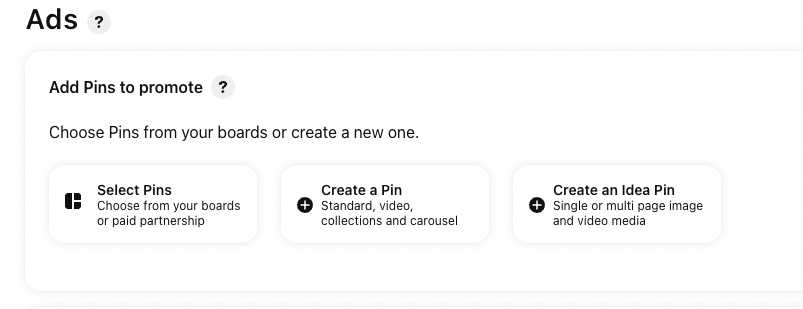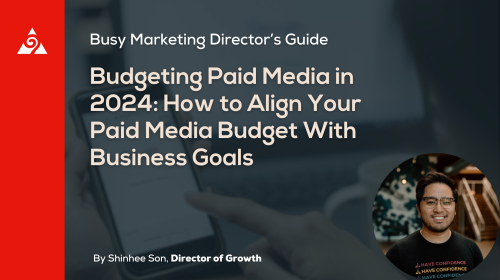Pinterest is a great way to get your business in front of a whole new audience, but many people don’t know how to use it for advertising.
You may be surprised to learn that Pinterest is one of the best platforms for advertising your business. With over 400 million active users, there’s a good chance that your target market is already using Pinterest.
Pinterest’s advertising can be a handy tool for the modern-day digital marketer and their omnichannel tactics. Being a platform where users find inspiration and start their journey, Pinterest is one of the only platforms that can aid in the entire customer journey.
This blog post will teach you how to advertise on Pinterest. We’ll show you how to get started with Pinterest ads, how to create an effective ad campaign, target your audience, and measure your results.
Ready to get started with Pinterest Ads? Let Augurian help you every step of the way! Our team of Pinterest ads experts can create, manage and optimize your campaigns to help you make the most of your Pinterest strategy. Contact us today to learn how we can take your advertising efforts on Pinterest to the next level!
- What Are Pinterest Ads?
- How Do Pinterest Ads Work?
- Benefits of Advertising on Pinterest
- Are Pinterest Ads Effective?
- How to Create Ads on Pinterest
- How to Measure ROI and Ad Performance
- Best Practices
- FAQs
What are Pinterest Ads?
Pinterest is a visual discovery and bookmarking platform where users can discover, save, and share ideas and inspiration for various projects and interests. Recognizing what Pinterest users are looking for and how the platform is used will allow you to better understand if your business is suitable for advertising on Pinterest.
Pinterest ads can be an effective way for businesses to reach a large and engaged audience, increase brand awareness on the heavily visual platform, and drive high-intent traffic and sales to their website. When used correctly, Pinterest can be a powerful marketing tool for businesses, especially those in industries such as fashion, home decor, fireplaces, food, and beauty, where visual content is crucial.
Types of Ads
Using Pinterest ads, businesses can create promotions using six main types of ads that the platform offers, including:
Standard Pins
These are regular Pinterest pins businesses can pay to promote to a broader audience. They can include a single image or video, along with a caption and destination URL. This type of ad is ideal for driving traffic to your website, increasing brand awareness, or promoting a specific product or service.
Video Pin Ads
Pinterest video ads allow businesses to capture users’ attention with visually engaging content. These ads can be up to 15 minutes long and in vertical or square format. Video ads are great for telling a story, showcasing a product in action, or demonstrating how your brand can solve users’ problems.
Carousel Ads
Carousel ads allow businesses to showcase up to five images or videos in a single ad. Users can swipe through the images or videos, making this format ideal for telling a visual story or showcasing multiple products in one ad.
Shopping Ads
These pins include product information and a link to buy the product directly from the pin. Shopping ads are perfect for businesses that sell products online and want to drive traffic directly to their product pages.
Collection Ads
Collection ads display your products in action with a hybrid format that mixes lifestyle imagery and video. These ads can include up to four product images or videos and one cover image or video. Collection ads are ideal for showcasing your products in a visually compelling way and driving users to purchase.
Idea Pin Ads
Idea Pins allow businesses to bring their brand to life with a captivating, multimedia storytelling format. This type of ad can include a mix of images, videos, text, and music to create an immersive experience for users. Idea Pins are great for creating brand awareness and building a strong connection with your audience.
Pricing
The type of Pinterest advertising campaign you run has the most impact on the price you pay for your ads. Some campaigns are paid per click, while others are paid per impression. However, other factors that can influence the cost of your Pinterest ads include the following:
Ad format
The cost of your ads can vary depending on the type of ad format you choose. For example, video ads are more expensive than static image ads.
Targeting Options
The more specific and narrow your targeting options are, the more expensive your ads may be. However, targeting a more relevant audience will result in higher engagement and conversion rates.
Competition
If there is high competition for ad space in your industry or niche, the cost of your ads may be higher. This can occur if multiple businesses are targeting the same audience with similar products or services.
Ad placement
The placement of your ads can also affect the price you pay. Ads placed in more prominent positions on Pinterest, such as in users’ home feeds or in search results, tend to be more expensive than those placed in less visible areas.
Overall, the cost of your Pinterest ads will depend on various factors, and it’s important to consider your goals and budget when choosing the type of advertising campaign that’s right for your business.
Let Augurian’s experienced professionals help you maximize the reach of your Pinterest ads and get the most from your budget by taking advantage of our custom-tailored paid media services.
Ad Specs
Knowing the specs for each type of ad can help maximize your potential on Pinterest. To create effective Pinterest ads, businesses must adhere to the following ad specs:
- Image Size – The recommended image size for Promoted Pins and Carousel Ads is 1000 x 1500 pixels. For Video Ads, the recommended size is 600 x 900 pixels.
- Aspect Ratio – The recommended aspect ratio for Promoted Pins and Carousel Ads is 2:3, while the recommended aspect ratio for Video Ads is 1:1 or 2:3.
- Video Length – The recommended video length for Pinterest Video Ads is between 6 and 15 seconds.
- Text – The recommended text length for Promoted Pins and Carousel Ads is 100 characters or less, while the recommended text length for Video Ads is 500 characters or less.
- Call-to-Action (CTA) – Pinterest offers several CTA options for businesses to choose from, including “Learn More,” “Sign Up,” and “Shop Now.”
It is important to remember that Pinterest’s specifications for image and video sizes, aspect ratios, text length, and call-to-action may change over time. Therefore it is always best practice to consult their guide before creating your Promoted Pins or Carousel Ads so you can ensure your content meets the latest requirements.
How Do Pinterest Ads Work?
Pinterest ads can appear in various locations throughout the platform, including home feeds, search results, category feeds, and profile pages.
With a wide range of targeting options, businesses have the ability to tailor their ads specifically to their desired audience based on demographics such as age, gender, interests, and location.
Here are a few places where Pinterest ads can be displayed:
Home feed
Promoted pins can appear in users’ home feeds alongside organic pins based on their interests and behaviors.
Search results
Promoted pins can appear in users’ search results when they search for relevant keywords or phrases.
Related pins
Promoted pins can appear in the “related pins” section on the right-hand side of the screen when users click on a specific pin.
Recommended pins
Promoted pins can appear in users’ home feeds’ “recommended pins” section based on their browsing behavior and interests.
Are Pinterest Ads Effective?
Whether or not Pinterest ads are worth running compared to other advertising platforms depends on your specific business goals and target audience. Factors to consider are how big your business’s potential audience is. While Pinterest has over 450 million monthly users, you should reference Pinterest trends to vet your business’ offerings to see if the juice is worth the squeeze when it comes to running ads.
We recommend creating a Pinterest account for your business and posting organic content; this will be the best way to grow your first-party Pinterest data and see if you have a true market when it comes to leveraging this platform.
This will also allow you to run promoted pins as an ad type (promoting organic posts) which is the easiest way to get started with advertising. Doing this also allows you to promote your best-performing organic posts, which we have seen work wonders for clients.
Benefits of Advertising on Pinterest
Advertising on Pinterest has several advantages over other platforms. Here are the top three benefits of using Pinterest Ads:
High-Intent Audience
Pinterest users are often in a shopping mindset, actively searching for ideas and inspiration. This means that they may be more likely to engage with and convert from Pinterest ads compared to users on other social media platforms who may be more focused on social interactions or entertainment. As a result, businesses may see a higher return on investment for their advertising spend on Pinterest.
Visual Platform
Pinterest is a highly visual platform with a focus on images and videos. This allows businesses to showcase their products and services in a visually appealing way, which can lead to higher engagement rates and increased brand awareness.
Long Lifespan of Content
Unlike other social media platforms where content has a short lifespan, Pinterest content can continue to be discovered and engaged with over time. This means that businesses may see a longer-term return on their investment in Pinterest ads as their content continues to drive traffic and sales months or even years after it was originally posted.
Pinterest’s high-intent audience, visual platform, and long lifespan of content may give it an advantage over other advertising platforms, particularly for retail, home decor, and DIY businesses. However, the effectiveness of Pinterest ads ultimately depends on each business’s specific goals and target audience.
How to Create Ads on Pinterest
Getting started with Pinterest ads may seem daunting, but it doesn’t have to be. These are the first five steps to get started with Pinterest ads. Once you’ve completed these steps, you can create your ad, set your budget and bid, and launch your campaign. Here are five steps to get started with Pinterest ads.
- Step 1: Create a Pinterest business account
- Step 2: Set up your Pinterest tag
- Step 3: Choose your ad objective
- Step 4: Set your targeting
- Step 5: Choose your ad format
Step 1: Create a Pinterest business account
Creating a free Pinterest Business Account is the first step to getting started with Pinterest ads. With a business account, you can access advanced analytics, insights, and features that help you optimize your campaigns and maximize results. You’ll also have access to Pinterest Ads Manager, which allows you to track performance metrics such as reach, impressions, clicks, and more.
Step 2: Set up your Pinterest tag
The Pinterest tag is a piece of code added to your website to track conversions and optimize your ads. Set up your Pinterest tag in Ads Manager by selecting “Conversion tracking” from the main menu and following the instructions.
There are three main ways that you can implement the Pinterest tag. (1) using an integration partner, (2) emailing instructions to a developer to do it, or (3) manually set up and install it yourself. As you work through these steps, choose the one that works best for your business.
Step 3: Choose your ad objective
In Ads Manager, select “Create ad” and choose your ad objective. Pinterest offers a variety of ad objectives, such as traffic, conversions, and video views.
Step 4: Set your targeting
Set your targeting criteria, such as location, language, interests, and keywords. Pinterest also offers targeting, allowing you to target users similar to your existing customers.
Step 5: Choose your ad format
Choose the ad format that best fits your goals and creative assets. Pinterest offers a variety of ad formats, such as promoted pins, videos, carousel ads, idea ads, and more.
How to Measure ROI and Ad Performance on Pinterest
The best way to measure the return on investment (ROI) and ad performance of Pinterest ads is to track your ad metrics and analyze your data. While Pinterest can be leveraged as a full-funnel platform, it’s important to note that Pinterest is still heavily geared towards first-touch attribution, where people start their journey, not where they end it.
Keep that in consideration when analyzing your Pinterest ads performance. Here are some key metrics to monitor:
Click-through rate (CTR)
This measures the percentage of users who clicked on your ad. A higher CTR indicates that your ad is resonating with your audience.
Pro tip: We like to have 3-5 ads running in each campaign for a few weeks, depending on your budget, then pausing the lowest-performing ones so you can use your best-performing ads as a benchmark moving forward.
Conversions
Conversions measure the number of users who completed a desired action on your website, such as making a purchase or filling out a form.
Cost per click (CPC) or cost per acquisition (CPA)
CPC or CPA measures the amount you pay for each click or conversion.The lower CPC or CPA means that you’re getting more value for your ad spend.
Engagement rate
This measures the percentage of users who engaged with your ad, such as saving or sharing it. A higher engagement rate indicates that your ad is capturing users’ attention.
Return on ad spend (ROAS)
This measures the amount of revenue generated for each dollar spent on ads. A higher ROAS means that your ads are driving more revenue for your business.
To measure these metrics, use the reporting tools available in Ads Manager. You can also use third-party tools to analyze your data and track your ROI. Once you have analyzed your data, make adjustments to your ad campaign as needed to optimize your results.
Pro tip: we use Google Analytics 4 to track our conversion data across all platforms we advertise on because (1) this gives us a single source of truth and (2) advertiser platforms typically inflate their own data, so doing this levels out that playing field.
Get the most out of your Pinterest advertising with Augurian’s data-driven approach. Contact us to see how we can help you succeed.
Best Practices for Pinterest Ads
By following these best practices, you can create visually appealing, engaging, and effective Pinterest ads that drive traffic and conversions to your website. It’s important to continually test and optimize your campaigns to ensure you get the best possible results.
- Use high-quality, visually appealing images or video
- Write clear, concise, and compelling copy
- Test and optimize your ad campaigns
Use High-Quality, Visually Appealing images or video
As you know, Pinterest is a highly visual platform, so it’s important to use high-quality images or videos that are eye-catching and visually appealing. Make sure your creative assets are on-brand and feature a clear focal point. We recommend using assets that include your logo for increased brand awareness.
Write Clear, Concise, and Compelling copy
Your ad copy should be clear, concise, and compelling. Use strong headlines and descriptions to grab users’ attention and entice them to click through to your website. Use relevant keywords for your target audience and include a call-to-action (CTA) to encourage users to take action.
Test and Optimize your Ad Campaigns
Testing and optimizing your ad campaigns is crucial to improving their performance. Try different ad formats, targeting criteria, and creative assets to see what works best for your business. Monitor your ad metrics and adjust your campaigns as needed to improve your ROI.
FAQs
What kind of content should I post on my boards?
To generate an audience on Pinterest, businesses should post a variety of high-quality, visually appealing content that aligns with their brand and appeals to their target audience. Here are some types of content that can be effective on Pinterest:
- Product images: Showcase your products or services with high-quality images that are visually appealing and show off their unique features and benefits.
- Lifestyle images: Create boards and pins that showcase the lifestyle or experience that your products or services provide. For example, if you sell outdoor gear, create boards that showcase hiking or camping destinations and pin images of your gear in action.
- How-to content: Create pins and boards that provide how-to content related to your products or services. For example, if you sell kitchen gadgets, create pins and boards that provide recipes or cooking tips.
- Infographics: Infographics are a popular form of content on Pinterest, as they allow you to convey information in a visually appealing and easy-to-digest format.
- Inspirational content: Create pins and boards that provide inspirational quotes or images related to your brand or industry.
- User-generated content: Encourage your followers to share their own images or experiences using your products or services and repost them on your own boards.
How often should I post new content?
The frequency of organic posting on Pinterest can vary depending on the business’s goals, the content they have available, and the preferences of its audience. However, businesses should generally aim to post on Pinterest regularly and consistently to keep their content fresh and engaging. Our recommendation is anywhere from 3-5 posts per week.
How do I use keywords to improve my pin visibility?
Keywords are an important part of posting on Pinterest because they help your content appear in search results and get discovered by users interested in your products or services. Here are some best practices for using keywords on Pinterest:
- Use relevant keywords in your pin descriptions. When creating pins, include descriptive and relevant keywords. This will help your pins appear in search results when users search for those keywords.
- Use keywords in board titles and descriptions. In addition to using keywords in pin descriptions, businesses should also use them in board titles and descriptions. This will help your boards appear in search results when users search for those keywords.
- Use long-tail keywords. Long-tail keywords are longer, more specific phrases that are less competitive than shorter, more general keywords. Using long-tail keywords can help your content rank higher in search results and attract more targeted traffic.
- Use Pinterest’s guided search feature. Pinterest’s guided search feature suggests relevant keywords based on what users are searching for. Use this feature to identify additional keywords that you may not have originally considered.
- Avoid keyword stuffing. While it’s important to use keywords in your pins and boards, it’s also important to avoid keyword stuffing. This means using keywords excessively or in a way that doesn’t make sense. Use keywords strategically and naturally, and focus on creating high-quality, valuable content that will appeal to your audience.
Can I advertise my Etsy shop on Pinterest ads?
Yes, you can advertise your Etsy shop on Pinterest by creating and running Pinterest ads. Etsy sellers can use Pinterest to promote their products and drive traffic to their Etsy shop by creating high-quality, visually appealing pins and promoting them through Pinterest ads.
To get started, you’ll need to create a Pinterest business account and link your Etsy shop to your Pinterest account. From there, you can create pins featuring your Etsy products and use Pinterest ads to promote them to your target audience.
When creating Pinterest ads for your Etsy shop, be sure to follow best practices for creating effective ads, such as using high-quality images and targeting the right audience. You can also use Pinterest’s ad analytics to track the performance of your ads and make adjustments as needed to improve their effectiveness.
Advertising your Etsy shop on Pinterest can be a highly effective way to drive traffic and sales to your shop, especially if you create visually appealing, high-quality pins and target them to the right audience.
More Tips on Paid Media from Augurian’s Experts
Whether you’re new to advertising, or a seasoned veteran, we hope this article can help kick-start your Pinterest advertising adventure. The team at Augurian is always looking for new opportunities for our clients, and we have certainly seen Pinterest as that platform.
In comparison to other advertising platforms, Pinterest is as full-funnel as it gets and can be a crucial part of your paid media strategy. Contact us today to get Pinterest ads kicked off for your business. Happy pinning!
- How to Advertise on Pinterest: A Beginner’s Guide - March 21, 2023
- What Are The Best Marketing Psychology Books? - May 6, 2022

